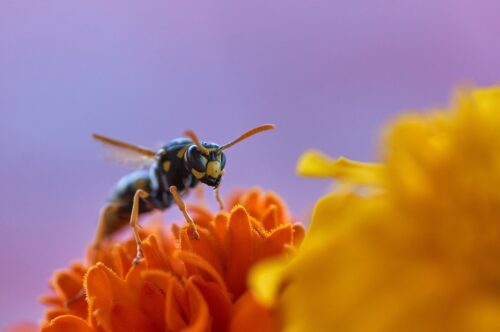Image Courtesy of Pixabay.
“Oops!” is not a word you want to hear in the lab. Unfortunately (or not), accidents are a common reality in research. But sometimes, these mistakes can bring about valuable revelations, as discovered by the nominees of NPR’s Golden Mole Award for Accidental Brilliance.
A podcast presented by Skunk Bear, NPR’s science-centered YouTube channel, highlights five instances of serendipitous scientific discovery, including the story behind the winner of the Golden Mole, Elizabeth Tibbetts. A biologist at the University of Michigan, Tibbetts was researching wasp behavior when she stumbled upon a fascinating revelation: wasps can recognize each other’s faces, just as humans can.
The realization started with a careless mistake. To study wasp behavior, Tibbetts taped and watched video footage of the insects, analyzing interactions between colony members. She color-coded each wasp with a dot of paint, a critical step that allowed her to distinguish between the insects. One day, however, she discovered that she had forgotten to paint a few wasps, leaving her with what she thought was a frustrating waste of a recording. But something caught her eye—she realized that the wasps had discernible facial features. “I could still tell them apart, just by their natural patterns,” Tibbetts said. Upon closer inspection, Tibbetts identified unique colors, patterns, and “eyebrow” structures that allowed her to differentiate them. The question then became: If she could distinguish between individuals, could the wasps themselves tell each other apart?
According to prior research on insect behavior, the answer was no. But Tibbetts was determined to investigate the subject herself. “Maybe if I had more experience, I wouldn’t have pursued it, because maybe I would have thought it was implausible,” Tibbetts said. Fortunately, she pushed on and determined that, yes, wasps can recognize each other. Furthermore, it is this ability that facilitates complex social interactions between members of a colony and allows for wasps to develop personal relationships.
Tibbetts’ serendipitous tale was one of hundreds of stories submitted to Skunk Bear. One notable runner-up was George Liu, a researcher at the University of California, San Diego, who discovered the novel use of pigment as a bacterial defense mechanism after his lab equipment was contaminated with bleach. Other memorable contenders included former Stanford University undergraduate Nate Cira and his adviser, Manu Prakash, who discovered the role of evaporation and surface tension in artificial chemotaxis, the movement of a particle in response to a chemical stimulus. While these stories only offer a glimpse into the myriad of ways in which discoveries can be made, they highlight the value of mistakes in research. Skunk Bear’s Golden Mole Award takes a creative approach to emphasize this lesson, presenting the “what” and “how” of the research in an amusing manner. Any listener curious about the “why” will need to engage in some investigation of their own due to the podcast’s brevity.
Skunk Bear’s Golden Mole segment is worth a listen for any person, researcher or not, who could use a reminder about the importance of adaptability and perseverance. If we can learn anything from these scientists, it’s that “oops” can be okay sometimes. It might even lead to something great.

